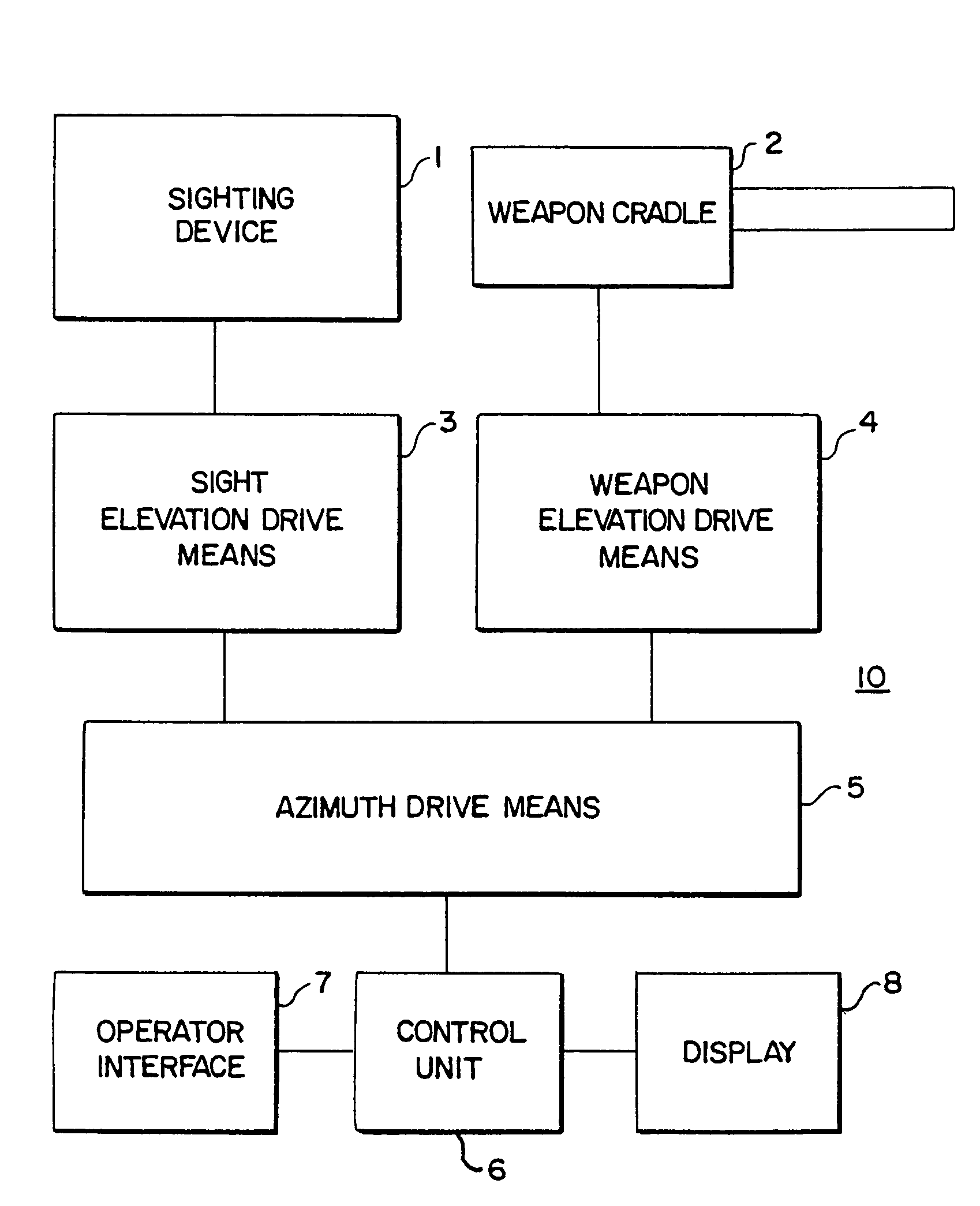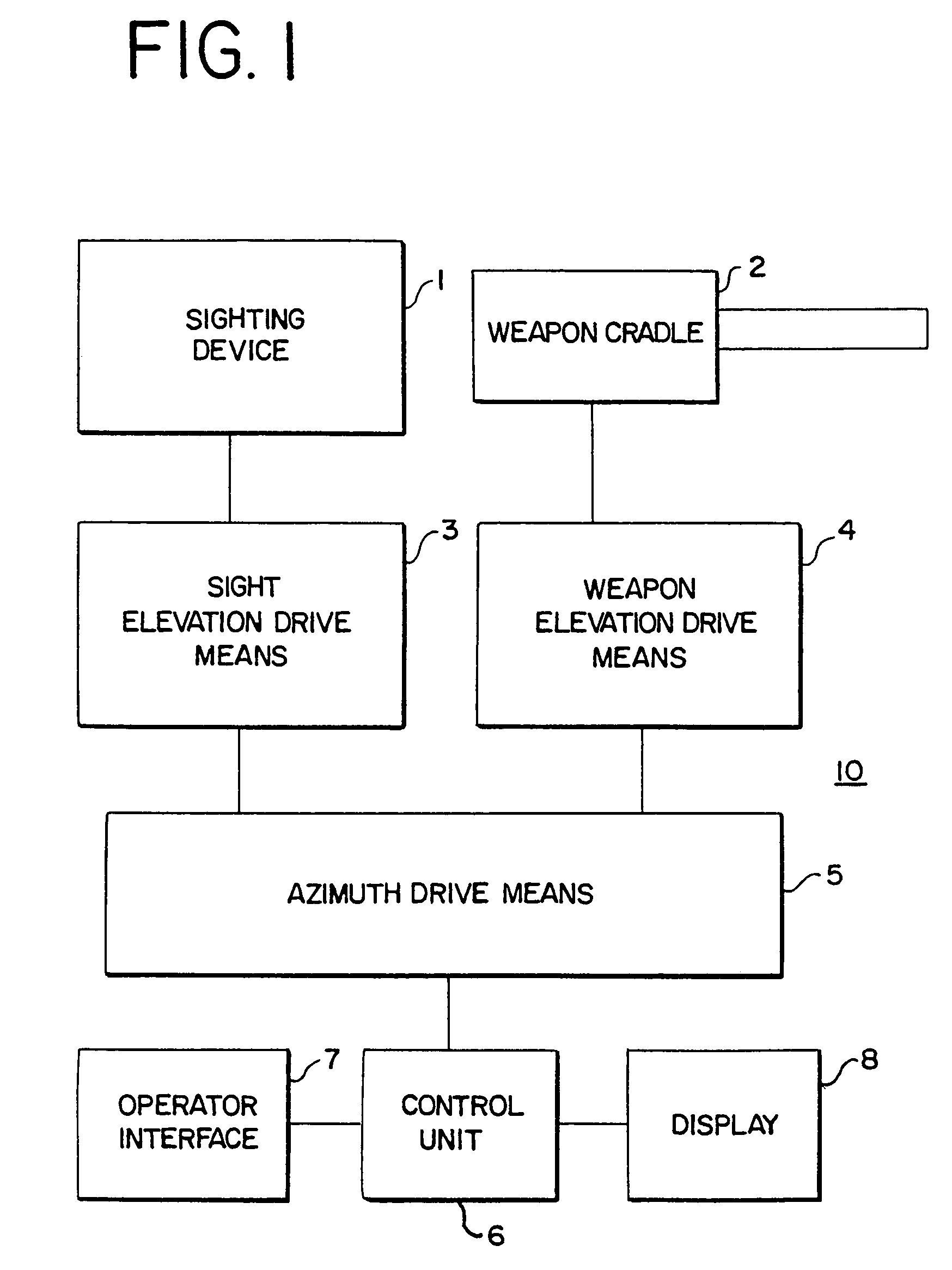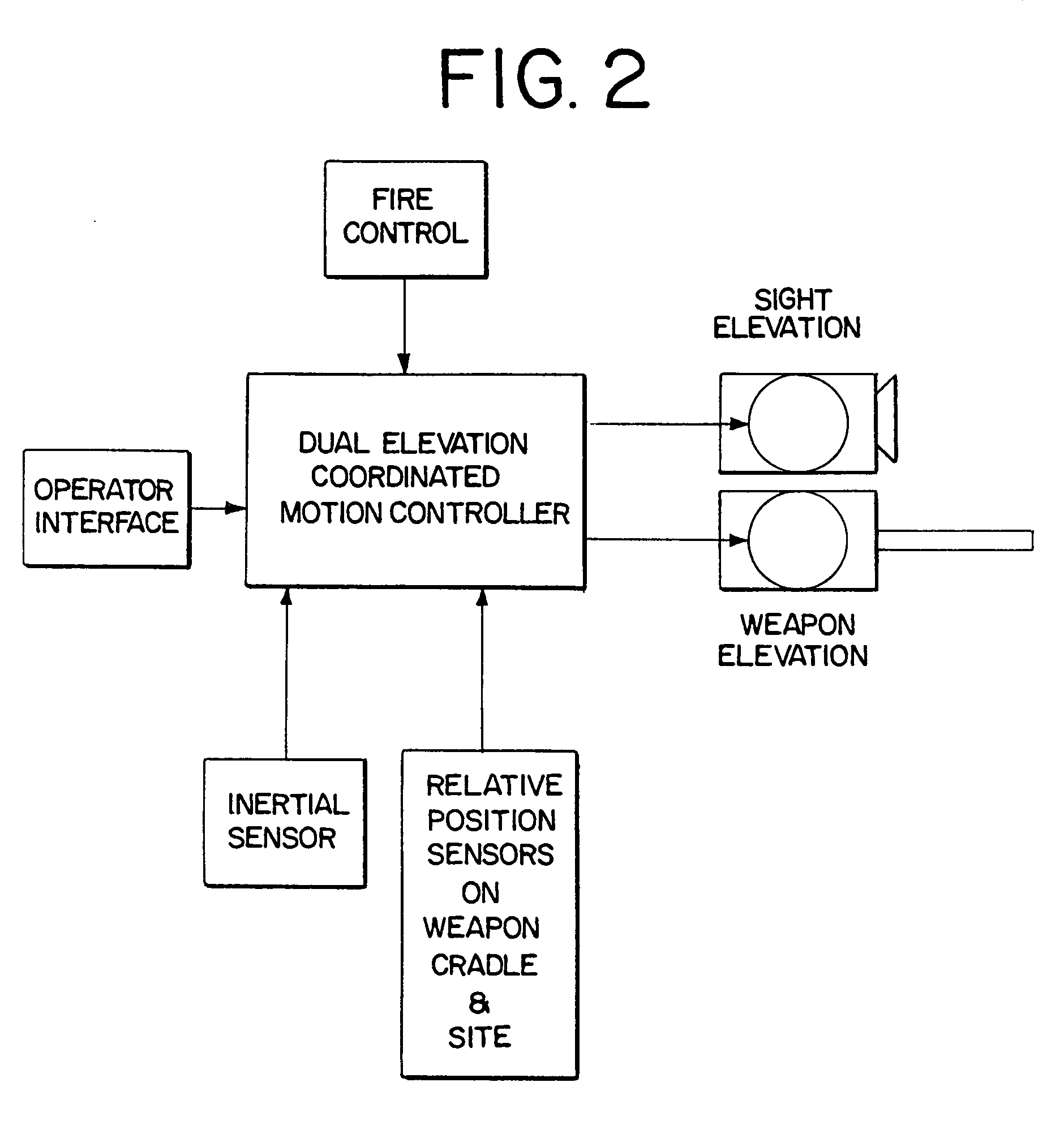Dual elevation weapon station and method of use
a weapon station and dual-altitude technology, applied in the direction of weapons, aiming means, weapon components, etc., can solve the problems of user completely losing the view of the target in the sight, sighting or aiming system no longer viewing the target, and the gun sight and the weapon sharing a common elevation mechanism
- Summary
- Abstract
- Description
- Claims
- Application Information
AI Technical Summary
Benefits of technology
Problems solved by technology
Method used
Image
Examples
Embodiment Construction
[0031]My invention is directed to a self-contained gimbaled weapon system (GWS) that has a sighting system and a weapon cradle where each has its own independent elevation axis. The GWS moves 360° in azimuth and allows the sighting system and weapon cradle to each move in elevation independently of each other, thereby allowing a weapon operator to always maintain visual contact with a target through the sighting system, yet allows the weapon cradle to achieve super-elevation positions to accommodate correct ballistic trajectories. FIG. 1 is a block diagram of my invention showing GWS 10 comprising sighting device 1 connected to a first sighting elevation means 3, which is detachably connected to azimuth drive means 5. Weapon cradle 2 is connected to a second elevation means 4, which, like first elevation means 3, is connected to azimuth drive means 5. Control of both elevation means 3 and 4 and azimuth drive means 5 is accomplished with control unit 6. Control unit 6 is connected to...
PUM
 Login to View More
Login to View More Abstract
Description
Claims
Application Information
 Login to View More
Login to View More - R&D
- Intellectual Property
- Life Sciences
- Materials
- Tech Scout
- Unparalleled Data Quality
- Higher Quality Content
- 60% Fewer Hallucinations
Browse by: Latest US Patents, China's latest patents, Technical Efficacy Thesaurus, Application Domain, Technology Topic, Popular Technical Reports.
© 2025 PatSnap. All rights reserved.Legal|Privacy policy|Modern Slavery Act Transparency Statement|Sitemap|About US| Contact US: help@patsnap.com



